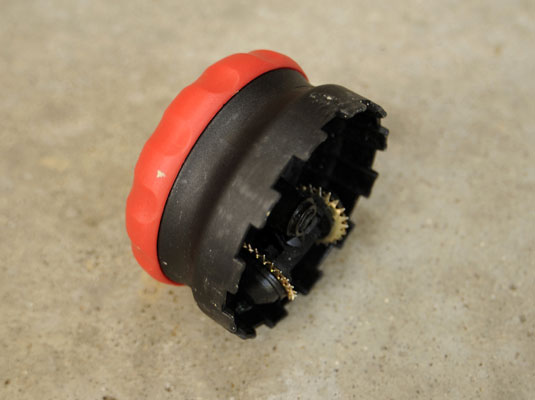elbrownos:
I've also got fibrous plasterboard in my late 1950's house, currently wallpapered.
It currently looks horrendous and I'll be happy with making it look reasonable, so I'm not interested in getting tradesmen or re-gibbing.
The plasterboard is very smooth and shiny (under the wallpaper) so I don't think paint will stick.
I've got a friend in the UK who recently redecorated using wallpaper that is designed to be painted over. This sounds like a good option for me, does anyone know if this wallpaper is available here?
Our house is all fibrous plasterboard (early '60s).
Much of it was wallpapered. It should be easier to get the wallpaper off and prepped for painting than with Gib, as there's no kraft paper layer as with Gib which tends to delaminate when it's wet or steamed, and makes a mess that will require skimming the lot or replacing all the gib.
If it's vinyl coated paper, then there's a paper removal device called (IIRC) a "spider" that has small serrated wheels that break through the surface allowing water to get through.

You need to test this on a small area to get the pressure right, if you go too deeply then you'll score the surface of the plaster with tracks from the serrated wheels and need to fill/skim those areas, the plaster surface if more or less as new shouldn't require skimming, it should be smooth as.
The plaster won't be damaged by using some water with a bit of detergent over the paper, that should penetrate through the vinyl surface into the wallpaper backing and soften the glue, with a bit of luck and practice first, you should be able to get a wall stripped easily. I've not needed to use a steamer. I've just used a garden sprayer to wet the surface, then wait and peel the paper off. Some patches of the paper backing may be stuck down a bit more firmly and delaminate as you peel it off. Give any of those patches a spray to wet them, after a few minutes they should come off easily - maybe a bit of help using a soft plastic scraper. Then wash the wall with water to remove the remaining wallpaper glue, I've just used microfibre cloths and a bucket to do this. This sounds like a recipe for disaster for people used to dealing with Gib, but it's fine. They still make plasterboard, it's very expensive ($100/sheet) and used for high-end builds and especially where curved walls are needed, it can be wet then steamed and formed to a curve. It's also stronger than Gib, the old stuff we have may not be to any particular bracing spec, but the sheets made now have equivalent bracing performance to fibre reinforced Gib - "braceline" etc.
Sheets used to use horse hair, the sheets in our house use what I assume is flax fibre - looks like the fibre in binder twine. New sheets use glass fibre chopped rovings.
Let it dry, then (re) stop and fill, skim only areas where it's needed, a coat of water based wallboard primer/sealer, then topcoats.
A couple of potential gotchas. Sometimes if wallpaper peeled a bit on edges, people would glue it back down with PVA or some other glue they had handy. This is a problem, wallpaper glue is soluble (methyl) cellulose based and (re)dissolves in water when you wet it. PVA etc doesn't, so getting any bits that have been patch glued that way might result in localised damage that you'll need to fix.
Pull the fuses / turn off the breakers for any fittings/outlets/switches - as you'll be splashing a bit of water around, and in any case you're going to have to get the faceplates off to get all the wallpaper out, then paint under the faceplates rather than try to cut in around them if you want a decent result.
Some people will say it's hard or impossible, but I suspect they misunderstand that fibrous plasterboard is not the same as the old "lathe and plaster" - and they've had experience with trying to remove wallpaper from the latter - a real can of worms.


